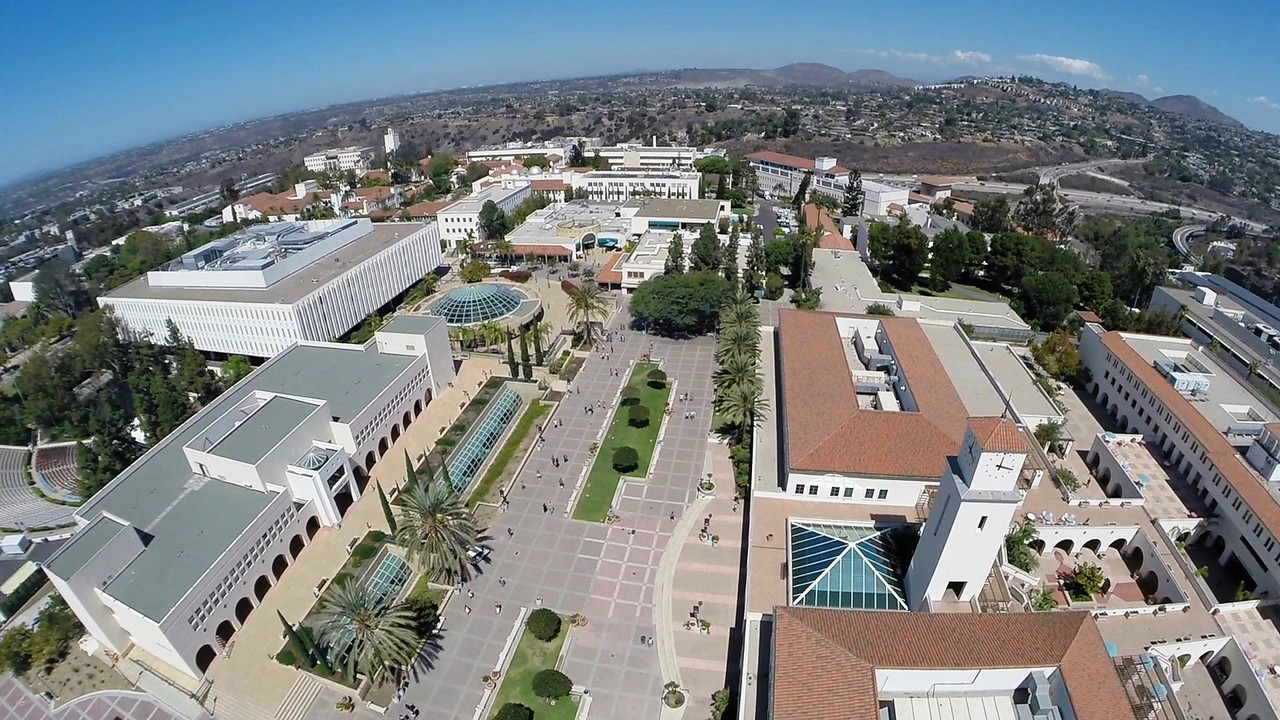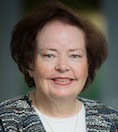Daily Business Report-Dec. 26, 2017
The study included athletes who took part in the NFL Scouting Combine in 2015. (Photo courtesy of Scripps Health)
New Study Links Low Vitamin D
to Muscle Injuries in NFL Prospects
Crushing tackles and jarring collisions aren’t the only injury risks for college football players. According to a new study published Thursday, low vitamin D levels appear to be leaving some of the game’s most promising pro prospects sidelined by muscle injuries.
The study included athletes who took part in the NFL Scouting Combine, an annual showcase where college football players perform physical and mental tests for NFL talent evaluators. Researchers analyzed data that was collected from 214 players at the 2015 combine, including their vitamin D levels, age, position, race, injury history and whether they had missed any college games due to a lower extremity muscle strain or core muscle injury.
Key research findings
Their analysis found that overall, 59 percent of the athletes had below-normal levels of vitamin D. Researchers also found that 56 percent of the players with low vitamin D experienced a lower extremity muscle strain or core muscle injury while playing in college, which jumped to 73 percent if severely deficient. Among players with normal vitamin D levels, 40 percent had experienced such injuries — a statistically significant difference between the groups.
Additionally, of the 14 study participants who missed at least one collegiate football game due to a muscle injury to a lower extremity or core region, 86 percent were found to have significantly low levels of vitamin D.
The study was published online on Dec. 21 by Arthroscopy: The Journal of Arthroscopic and Related Surgery.
“We were interested in vitamin D in this population because it’s been shown to play an important role in muscle function and strength, which is critical to the high-performance athlete,” said Brian Rebolledo, an orthopedic surgeon at Scripps Clinic and the lead author of the study. “Most of the past research into the harmful effects of low vitamin D has focused on the elderly, but relatively few studies have examined this association in the elite athlete.”
Disparities and similarities
Additionally, the 2015 NFL combine study found that 70 percent of black athletes had low levels of vitamin D, compared to 13 percent of white athletes. There were no meaningful differences in vitamin D levels between skill position players (quarterbacks, running backs, receivers, defensive backs and kickers) and linemen/others (offensive and defensive linemen, linebackers and tight ends). The average age of study participants was 22.
“This study suggests that monitoring and treating low vitamin D may potentially be a simple way to help prevent certain muscle injuries,” Dr. Rebolledo said. “Additional research needs to be done to see if boosting vitamin D levels leads to improved muscle function and fewer injuries.”
The observational study was based on a retrospective review of deidentified player data. It builds on a handful of recent studies that have found vitamin D deficiencies among active NFL players and collegiate basketball players.
Beyond the elite athlete
Dr. Rebolledo said the findings could be meaningful to a broad range of athletes, from competitive to recreational. “It’s a good idea for adults to have their vitamin D levels monitored and to ask their doctors about options if their levels are low,” Dr. Rebolledo said. “Whether you’re training for a marathon or walking your dog around the block, it’s important to maintain good muscle and bone health, and vitamin D plays a key role.”
Vitamin D deficiency reportedly affects nearly 42 percent of adults in the United States. Low vitamin D may result from poor dietary intake, lack of adequate sunlight exposure or poor absorption due to various causes (such as inflammatory bowel disease and celiac disease).
The two main ways to get vitamin D are by skin exposure to sunlight, which can carry potential risks, and by taking vitamin D supplements. Some foods also provide vitamin D, including egg yolks, salmon and fortified milk, orange juice and cereal.
__________________
Daniel Belsky Appointed to Judgeship
In San Diego County Superior Court

Daniel Belsky, 65, of San Diego, has been appointed to a judgeship in the San Diego County Superior Court by Gov. Jerry Brown. Belsky has been a partner at Davis, Grass, Goldstein and Finlay since 2017. He was president and managing director at Belsky and Associates from 1992 to 2017.
Belsky was vice president at Sulzner and Belsky from 1986 to 1992. He was an associate at Rhoades, Hollywood and Neil from 1979 to 1986 and at Eliassen, Postel and Mee from 1978 to 1979.
He earned a Juris Doctor degree from the University of Miami School of Law and a Bachelor of Arts degree from Hobart College.
Belsky fills the vacancy created by the retirement of Judge Ronald S. Prager. He is registered without party preference.
__________________

San Diego County Jobless Rate Falls to 3.3 Percent
“Seasonal hiring helped push the unemployment rate to a low we haven’t seen in 17 years. With the labor market this tight, wages only have one place to go — up!” — Phil Blair, President and CEO, Manpower San Diego
The unemployment rate in the San Diego County was 3.3 percent in November, down from a revised 3.7 percent in October 2017, and below the year-ago estimate of 4.3 percent, the state Employment Department reported. This compares with an unadjusted unemployment rate of 4 percent for California and 3.9 percent for the nation during the same period.

Between October and November, total nonfarm employment increased from 1,456,900 to 1,469,000, a gain of 12,100 jobs. Agricultural employment decreased by 300, from 8,900 to 8,600 jobs.
- Employment in trade, transportation, and utilities grew the most over the month, adding 7,800 jobs. The majority of this growth was located in retail trade (up 6,300). Transportation, warehousing, and utilities (up 1,000), and wholesale trade (up 500), also recorded increases.
- Educational and health services added 2,700 jobs, with health care and social assistance (up 1,800), accounting for most of the gain. Employment in government increased by 2,600. Gains in both state government (up 800), and local government (up 1,900), offset a loss in federal government (down 100).
- Other sectors posting gains over the month were other services (up 600), construction (up 500), financial activities (up 300), and manufacturing (up 300).
- Leisure and hospitality recorded the largest month-over loss, declining by 2,300 jobs. This decline came entirely from food service and drinking places (down 2,300).

Between November 2016 and November 2017, total nonfarm employment grew by 1.4 percent, up 20,800 jobs. Agricultural employment did not change.
- Educational and health services added the most jobs over the year, growing by 7,000. Health care and social assistance (up 6,200), was responsible for most of the increase.
- Government employment increased by 4,100. Local government (up 3,100), and state government (up 1,000), were responsible for all the gain.
- Other services (up 3,700), construction (up 3,000), leisure and hospitality (up 2,100), financial activities (up 1,600), professional and business services (up 600), and manufacturing (up 200), all recorded year-over gains.
- Trade, transportation, and utilities was the only sector that logged fewer employers than the prior year (down 1,500).
__________________
Salk Institute President to Step Down:
Elizabeth Blackburn announces retirement

Salk Institute President Dr. Elizabeth Blackburn has announced her plans to retire and step down as the institute’s head at the end of this summer. The Board of Trustees, led by Dan Lewis, who was elected chair in November, will commence a search for Blackburn’s successor beginning in January.
“Being named to lead the Salk Institute unquestionably has been an honor of my life and this decision did not come without a great deal of thought,” said Blackburn. “At this stage in my career and life, I’ve concluded that my energies will be best devoted to wider issues of science policy and ethics —issues in which I have had a deep and longstanding interest — and spent advocating for measures I feel are critical to supporting ongoing scientific research and discovery worldwide. That’s where my passion has evolved over many years, and also where I feel I can make the most impactful contribution at the broadest level.”
A Nobel Prize-winning scientist and pioneering molecular biologist, Blackburn was named Salk’s president in November of 2015. Prior to that, she served as a Salk non-resident fellow. Blackburn won the Nobel Prize in Physiology or Medicine in 2009 for discovering the molecular nature of telomeres, the ends of chromosomes that serve as protective caps essential for preserving genetic information, and for co-discovering telomerase, an enzyme that maintains telomere ends.
In her statement, Blackburn did not mention the three faculty members who separately sued the institute over the summer, alleging that the Salk discriminates against women in salary, benefits, promotion and access to money. Blackburn says the allegations are untrue. She declined a request from the Union-Tribune last Thursday to discuss the lawsuits and her retirement.
__________________

SDSU Ranks Among Top
Universities for Value Education
San Diego State University again has been named to Kiplinger’s Personal Finance list of best values in public colleges. The list recognizes four-year schools that deliver quality education at an affordable price.
Kiplinger’s Best College Values lists SDSU No. 59 among public universities and No. 177 overall based on its academic quality, cost and financial aid measures. Both public and private colleges are evaluated on competitiveness, graduation rates and academic support programs.
SDSU’s stellar standings are attributed to its high four-year graduation rate, low average student debt at graduation, abundant financial aid, low tuition cost and overall great value. An estimated 60 percent of students are receiving financial aid, scholarships, or a combination of both. During the 2016-17 academic year, SDSU’s financial aid office disbursed more than $250 million in financial aid.
__________________
General Atomics Awarded Contract
from Office of Naval Research
General Atomics Electromagnetic Systems (GA-EMS) has been awarded a contract from the Office of Naval Research to design and deliver an advanced permanent-magnet propulsion motor intended for use in large displacement unmanned undersea vehicles.
Over the next 18 to 20 months, the San Diego company will design, build, and test the advanced permanent-magnet propulsion motor and deliver a complete motor system to the Office of Naval Research. Testing of the motor system will be conducted by the Pennsylvania State University Applied Research Laboratory.
__________________
Pamela K. Wasserman Joins La Jolla
Institute Board of Directors

Pamela K. Wasserman, a longtime leader in health care, real estate and a variety of other businesses, has been elected to the board of directors of the La Jolla Institute for Allergy and Immunology.
Wasserman, a Rancho Santa Fe, resident, is co-general partner of Wasserman Companies and will succeed her husband and business partner, Fred, who served on the Institute board for the past five years. The Rancho Santa Fe resident was born in Los Angeles, where her father worked in the exhibitor department of the movie studio RKO Pictures.
Wasserman attended UCLA, receiving a BA (cum laude) in psychology and an MPH in Health Services Management.


